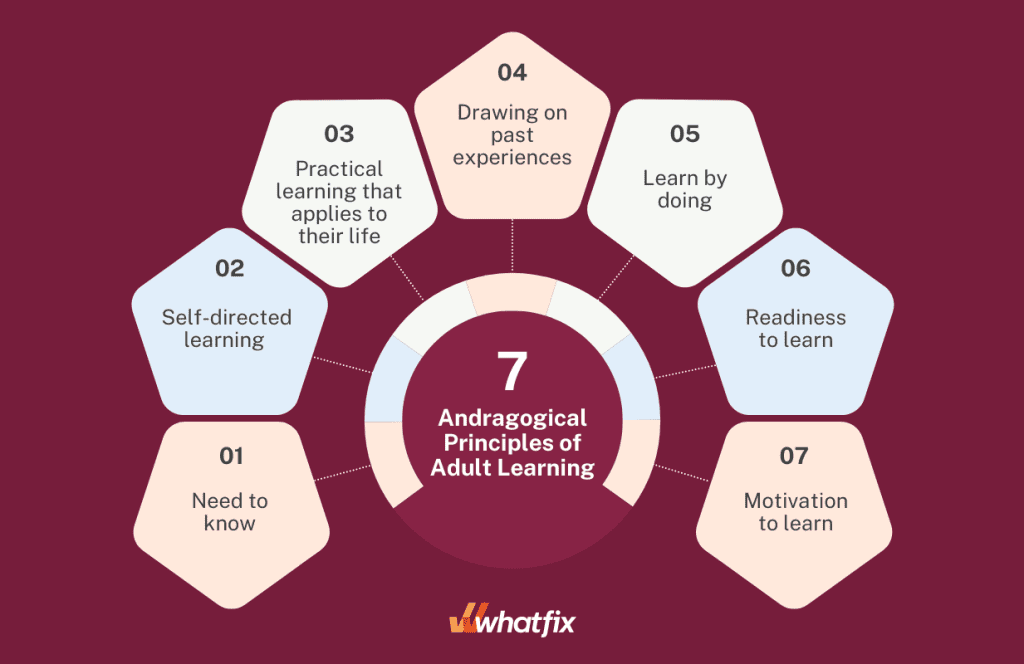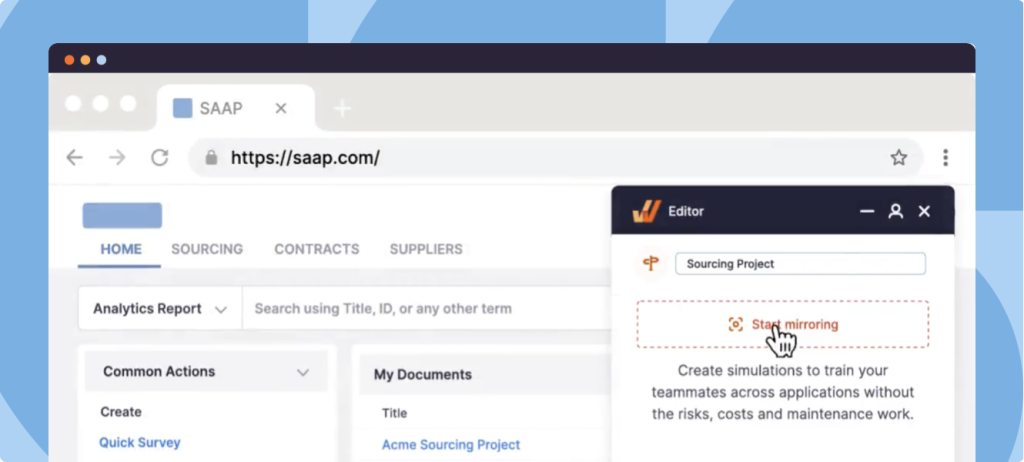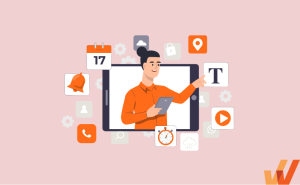As children, we spend most of our time learning, whether in a formal educational setting or by accumulating new experiences. Young minds are naturally primed for learning—their brains can form and modify connections and pathways quickly as they engage with the world around them. This is why it’s common to refer to children as information-absorbing sponges.
As adults, we still learn new things, but our brains handle information differently, and we tend to have more control over the information we’re taking in. Thus, adult education activities have complex challenges that differ from those that cater to children. This includes innate learning capabilities and external pressures or stressors.
In this article, we will discuss the concept of Adult Learning Theory, including the 7 core principles, expected benefits, and challenges associated with adult learning. We will also discuss how your team can use technology to facilitate corporate learning and development activities within your organization according to Adult Learning Theory principles.
What Is Adult Learning Theory?
Adult Learning Theory refers to principles and theories explaining how adults learn differently from children. It emphasizes that adults are self-directed learners with a wealth of experiences they bring to the learning process. The theory highlights that adult learners are motivated by practical, problem-solving needs and prefer learning relevant to their personal or professional lives. The ke components of the Adult Learning Theory include the concepts of self-direction, experiential learning, readiness to learn, and the importance of internal motivation, all of which are central to designing effective adult education programs.
The History of the Adult Learning Theory
Up until the 1960s, the vast majority of teaching theories were based on educating children. The methods and practices that developed based on these theories were called pedagogy, from the Greek “paidos,” meaning child, and “agogos,” meaning leader. This way of thinking led to a one-size-fits-all approach to education that assumed human learning capabilities remained static throughout our lifetime.
In 1833, a German gymnasium teacher named Alexander Knapp first described the concept of andragogy in a book about education, changing the term’s prefix to mean man instead of child. He mentioned the need for adult education but did not create a framework for implementing it. In the early 1900s, American educator Eduard C. Lindeman circled back to the idea and developed the concept centering on learner experience.
It was not until the 1960s and 1970s that Malcolm Knowles, a professor of education at Boston University, popularized the concept and formalized the framework of andragogy. As a result, he proposed a reframing of adult education, catering specifically to the characteristics and needs of adult learners. His framework for adult learning theory was also called andragogy.
Related Resources
7 Andragogical Principles of Adult Learning
Knowles’ Andragogy is based on several fundamental principles about adult learners that can inform the optimal design of workplace learning and development activities and employee training programs.
Here are 7 of the most commonly cited foundational principles of andragogy:

1. Need to know
Adults tend to engage in learning activities for a specific purpose. Whether solving a problem or acquiring skills for a career move, adults learn about things they need to know. This makes relevance critical to workplace learning activities. L&D teams should clarify how training exercises tie directly to employees’ roles and the values of the larger organization.
2. Self-directed learning
Adult learners are more capable of and often prefer to direct their learning activities without the oversight of an instructor or coach. Because adults approach their careers and education from experience, they are much more adept at managing their learning activities, from setting goals to choosing appropriate resources.
They are also more practiced in critical thinking, allowing adults to reflect on their performance as they progress and direct their next steps. This makes flexibility and mixed-modality options important for allowing employees to have a hand in their learning journeys.
3. Practical learning that applies to their life
Adults’ time is a valuable resource. To keep employee learners engaged, L&D teams must create effective training programs relevant to job duties and practical. L&D teams should design lessons to emphasize skills and information that can immediately be used to resolve issues or optimize processes rather than theoretical concepts.
4. Drawing on past experiences
Adults have decades of experience to draw from, so as they learn, they add new information to what they may already know. This can help speed up time to proficiency and strengthen understanding, unlike when learners start from scratch. This effect is advantageous in the workplace and can be accentuated by encouraging workers to engage in more hands-on training or experiential learning activities.
5. Learn by doing
Many adults are more effectively engaged by learning activities involving hands-on activities and physical engagement. These activities tend to be more stimulating and provide experimentation and real-life problem-solving opportunities, ensuring that employees can quickly apply what they’ve learned to real-life work situations.
This is backed up by the 70-20-10 rule of learning, which states that 70% of knowledge comes from hands-on experiences, 20% from social learning, and 10% from formal training programs.
Organizations can enable learning in the flow of work with a digital adoption platform (DAP) like Whatfix DAP. Whatfix enables L&D teams with a no-code editor to create and launch in-app flows, smart tips, task lists, pop-ups, self-help wikis, and more—all providing moment-of-need learning in the flow of work that’s contextual to your employees’ tasks and workflows.
6. Readiness to learn
Just like adults tend to engage with relevant, practical educational materials, they also do so when they are genuinely receptive to or need new information or skills. Whether the need to learn is brought on by life events or changes in work environments, this sense of importance facilitates knowledge acquisition. It goes a long way toward boosting learning outcomes.
7. Motivation to learn
Adults also have a wider variety of motivating factors than children. From the desire for personal growth to job requirements, adults’ reasons for learning increase their motivation to succeed. L&D teams can use this principle when designing learning activities by creating opportunities for learners to recall their learning motivations and goals, keeping them engaged and excited throughout the process.
Benefits of Adult Learning Theory
Educational programs designed according to Adult Learning Theory increase engagement and improve learning outcomes by catering to adults’ existing motivations and tendencies toward self-direction. In the long run, this approach helps learners develop confidence, cultivate a desire for continuous learning, and create highly effective employees.
Let’s discuss the most important benefits of implementing the adult learning theory for corporate learning.
- Considers how learning differs for adults: Adult learning theory makes L&D initiatives more effective by ensuring that all activities tap into the ways adults learn best rather than carrying principles over from youth-centered teaching methods. This leads to more positive learning experiences and better overall learning outcomes.
- Drives learner engagement and knowledge retention: An andragogical approach prioritizes active involvement, self-direction, and the utilization of existing knowledge to make workplace learning more meaningful and personalized. By creating these relevant, practical learning experiences, L&D teams can ensure high learner engagement and improved learning retention.
- Aligns with adult learner goals and motivations: With Adult Learning Theory, L&D teams can create learning activities directly relevant to learners’ work lives. This allows training programs to keep learners’ attention so they can retain more information and accomplish their goals.
- Easy to adapt: Adragogy caters to adults’ tendency toward self-direction and absorbing practical information, making learning activities flexible. This, in turn, leads to a framework that makes it easy for learners to choose newly relevant lessons as circumstances change and for L&D teams to create new learning content as necessary.
Challenges of Adult Learning Theory
Here are some challenges you might face in implementing adult learning theory for your organization.
- Balancing learning with other commitments: Learning is rarely an adult’s main priority. This is not because it’s not important but because adults have various responsibilities and commitments. Between work responsibilities, family obligations, and self-care, it can be challenging to find time. By providing opportunities for flexible, on-demand learning, L&D teams can help employees make time for professional growth amidst the chaos of life.
- Fear of adult learning: Learning may be like riding a bike, but it’s common for adults to hesitate to get behind the wheel after a long time away. Employees come from a wide range of backgrounds and educational experiences, which can make engaging in adult learning activities more intimidating. L&D teams can help remedy this issue by designing accessible and engaging learning content to meet the needs of employees with different learning needs, styles, and preferences.
- Imposter syndrome: Impostor syndrome can stop employees from learning before they even begin. Employees experiencing this syndrome can lead to lowered confidence, reduced participation, high levels of stress, and feelings of low achievement. L&D teams should develop a supportive learning environment to counteract these effects, encourage learners to acknowledge and understand these feelings, and empower confidence-building throughout programming.
- Neuroplasticity: Adults have reduced neuroplasticity compared to younger individuals, which can lead to slower, more difficult learning experiences and overall difficulty learning new skills and information. This does not make adult learning impossible. It simply requires strategic program development.
How to Apply Adult Learning Theory to Corporate L&D
For most L&D teams, integrating adult learning theory principles into programming doesn’t require starting from scratch. Here are some best practices for applying andragogy to your organization’s corporate learning initiatives:
1. Analyze training within the context of the adult learning theory
To start, audit your organization’s L&D programs through the lens of Adult Learning Theory. Consider the training methods, instructional approaches, and learning theories behind the existing structures and make note of areas that already work well and others that leave room for improvement. For areas that do not align with corporate learning theory, consider how they might be adjusted to fit better with the principles of andragogy.
2. Collaborate with employees to build training programs
A great way to ensure your organization’s L&D strategy meets employees’ needs is to involve them in the development process. Use employee performance reviews and manager insights and solicit direct feedback to understand the best topics to include and learning preferences across teams. Use this information to create relevant and practical training materials that genuinely meet your employees’ needs.
3. Provide self-guided learning experiences
Transform static, traditional, lecture-based training programs into dynamic, engaging, and flexible ones. Use technology and hands-on options to provide employees with opportunities to direct their professional growth.
For example, you might deliver training opportunities through eLearning software with flexible learning paths or through self-serve knowledge bases or in-app support messages empowering team members to learn how to resolve issues in their exact moment of need.
4. Use contextual, real-world experiences
While the big picture is always important, ensure that L&D content includes specific examples and true-to-life tutorials. These details make learning content feel especially relevant and practical. Provide in-the-moment support through in-app messaging tools and Digital Adoption Platforms.
5. Enable employees with hands-on training
Hands-on training is a key aspect of Adult Learning Theory. Incorporate in-person and virtual hands-on activities to keep learners engaged and empower them to transfer what they’ve learned into real-life applications immediately upon completing training activities.
For software training, use a virtual sandbox tool like Whatfix Mirror to replicate real-life software environments for employee training without risking live data.

→ Easily create replica versions of your enterprise applications and workflows to provide hands-on user training, without technical dependencies.
→ Embed timely in-app experiences to drive knowledge retention and improve user training.
→ Auto-capture user engagement and training data to understand your simulated training’s impact.
Integrating Technology into Adult Learning
L&D teams can leverage technology to make adult learning more engaging, accessible, and effective. Many digital software solutions on the market are compatible with delivering training experiences informed by Adult Learning Theory.
-
Corporate learning management systems – An LMS delivers, manages, and tracks training programs within an organization. It enables adult learning by providing a structured environment where learners can access a wide range of resources at their own pace, reflecting the self-directed nature of adult learning. The LMS allows for personalizing learning paths, ensuring that content is relevant and tailored to the learner’s specific needs and job roles.
-
Digital adoption platform – A DAP supports adult learning by simplifying the onboarding and using new software and technologies within an organization. DAPs provide real-time, in-app guidance that helps users learn by doing, which aligns with the experiential learning aspect of Adult Learning Theory. This hands-on approach allows adult learners to immediately apply new knowledge in their work context, reinforcing learning and building confidence. DAPs can also deliver personalized tips, tutorials, and walkthroughs based on the user’s specific actions and needs, ensuring that learning is relevant and directly applicable.
-
Microlearning platforms – Microlearning platforms deliver content in small, focused chunks, typically lasting just a few minutes. This approach is particularly practical for adult learners, who often prefer concise, targeted learning that fits their busy schedules. Microlearning platforms enable just-in-time learning, allowing adults to access specific information when needed, enhancing retention and relevance.
Training Clicks Better With Whatfix
Whatfix DAP can facilitate the integration of Adult Learning Theory into workplace training and create optimal training experiences across your organization’s workforce. Whatfix integrates with your organization’s existing software and digital training tools to provide relevant, practical in-app training and support within the flow of work.
Whatfix Mirror makes it easy to create virtual software environments to provide hands-on software training without the pressure or risk associated with affecting live company data. You can also use Whatfix Analytics to monitor and improve training programs continually.
With Whatfix, your team can reduce user friction, improve learner engagement, and maximize ROI on all L&D efforts.
To learn more about Whatfix training, schedule a free demo with us today!






